 1985 Peugeot 309 (10C,10A) 3-door Dimensions, Size & Specs
1985 Peugeot 309 (10C,10A) 3-door Dimensions, Size & SpecsMeasurements of the 1985 Peugeot 309 3-door, engineered for optimal performance and comfort
| Dimensions | |
|---|---|
| Length: | 4051 mm159.5 in13.3 ft |
| Width: | 1628 mm64.1 in5.3 ft |
| Height: | 1380 mm54.3 in4.5 ft |
| Trunk Capacity: | 397 liter14.0 cu ft |
| Trunk Capacity (Max): | 1279-1290 liter45.2-45.6 cu ft |
| Weight Specifications | |
| Curb Weight: | 822-912 kg1812-2011 lbs |
| Maximal permitted Weight: | 1290-1370 kg2844-3020 lbs |
| Tire Specifications | |
| Rims Sizes: |
|
| Tire Sizes: |
|
The Peugeot 309 (10C, 10A) 3-door hatchback, produced between 1985 and 1989, represents a compact and versatile vehicle from the mid-1980s. With a length of 4051 mm (159.5 inches), a width of 1628 mm (64.1 inches), and a height of 1380 mm (54.3 inches), this model comfortably fits within the compact hatchback category of its era. The car's curb weight ranges from 822 to 912 kilograms (approximately 1,812 to 2,010 pounds), balancing nimble handling with solid build quality. It supports a maximum weight between 1290 and 1370 kilograms (2,844 to 3,020 pounds), enabling a practical blend of passenger and cargo capacity. One of the key highlights of the Peugeot 309 3-door hatchback is its flexible luggage capacity: with standard seating, it offers 397 liters (14 cubic feet) of cargo volume, which expands significantly to between 1279 and 1290 liters (45.1 to 45.5 cubic feet) when the rear seats are folded down. This adaptability made it well-suited for both daily urban commutes and longer trips requiring extra storage space. Tire and rim options varied, featuring rim sizes of 13, 14, and 15 inches fitted with tire sizes including 185/55 R15, 145/70 R13, 165/70 R13, and 175/65 R14. These options allowed drivers to tailor the car’s handling characteristics to preference or road conditions. Overall, the Peugeot 309 (10C, 10A) 3-door hatchback represents a practical, lightweight, and compact European car from the 1980s, offering a balanced combination of size, weight, and flexible storage, making it a noteworthy example within the compact hatchback class of its time.
Discover the standout features that make the 1985 Peugeot 309 3-door a leader in its class
Have a question? Please check our knowledgebase first.
The Peugeot 309 (10C,10A) 3-door hatchback produced from 1985 to 1989 features a length of 4051 mm (159.5 inches), a width of 1628 mm (64.1 inches), and a height of 1380 mm (54.3 inches). These dimensions provide a compact yet practical hatchback size, offering a balance of interior space and external maneuverability typical of mid-1980s European hatchbacks.
The Peugeot 309 (10C,10A) hatchback has a curb weight ranging from 822 kg to 912 kg (1812 lbs to 2011 lbs). Its maximum permissible weight is between 1290 kg and 1370 kg (2844 lbs to 3020 lbs). This weight range reflects variations depending on engine type, trim, and optional equipment. The relatively light curb weight contributes to nimble handling and fuel efficiency, while the maximum weight accounts for passengers, cargo, and fuel.
The Peugeot 309 (10C,10A) offers a luggage capacity of 397 liters (14 cubic feet) with the rear seats in place, providing ample space for everyday items or grocery runs. When the rear seats are folded down, this capacity expands significantly to between 1279 and 1290 liters (approximately 45.1 to 45.5 cubic feet), making it versatile for transporting larger cargo or luggage during trips.
The Peugeot 309 (10C,10A) came with rim sizes of 13, 14, and 15 inches. Tire sizes ranged accordingly and included 185/55 R15, 145/70 R13, 165/70 R13, and 175/65 R14. These options allowed owners to choose between sportier aesthetics and comfort-oriented setups, reflecting typical tire technology and style preferences of the late 1980s hatchback class.
Yes, the Peugeot 309 (10C,10A) 3-door hatchback fits comfortably into a standard residential garage. With a length of 4051 mm (159.5 inches), a width of 1628 mm (64.1 inches), and a height of 1380 mm (54.3 inches), it is compact enough to fit in typical single-car garages, which generally measure around 2400 mm (94 inches) in width and 4800 mm (189 inches) in length. This makes it an easy vehicle to park and store for most urban homeowners.
Compared to its predecessor, the Peugeot 205, the 309 (10C,10A) is notably larger in almost all dimensions. The 309's length of 4051 mm (159.5 inches) exceeds the 205's approximate 3700 mm (145.7 inches), offering more internal space and improved comfort. The width is also increased to 1628 mm (64.1 inches) versus the 205's narrower stance around 1590 mm (62.6 inches). This size growth positioned the 309 as a larger hatchback with better luggage capacity and a more spacious cabin, catering to customers seeking a more practical small family car.
The Peugeot 309 (10C,10A) was competitive in size compared to other European compact hatchbacks from the mid to late 1980s. Its length of 4051 mm (159.5 inches) was similar to competitors like the Volkswagen Golf Mk2 and Ford Fiesta of that time, which were typically between 4000 mm and 4100 mm in length. The 309’s width of 1628 mm (64.1 inches) provided a bit more interior room than some rivals such as the Ford Fiesta, aiding passenger comfort. Its luggage capacity when seats are folded (up to 1290 liters or 45.5 cubic feet) also compared favorably, making it a well-rounded choice for buyers seeking a balance of size and versatility.
The Peugeot 309 (10C,10A) has a height of 1380 mm (54.3 inches). This relatively low profile height offers a sporty and aerodynamic stance typical of hatchbacks of the era. While the height may reduce headroom slightly compared to taller vehicles, the design is optimized for comfortable seating and visibility within a compact urban-friendly body. This overall height contributes to stable road handling and lower wind resistance.
The Peugeot 309 (10C,10A) supports several tire sizes to fit its rims, including 185/55 R15 for a sportier setup, 175/65 R14, 165/70 R13, and 145/70 R13 for everyday comfort and fuel-efficient driving. These sizes allow flexibility for owners to balance between performance and ride quality. The recommended tires match the rim diameters of 13, 14, and 15 inches respectively, following manufacturer specifications for safety and optimal handling.
The maximum permissible weight for the Peugeot 309 (10C,10A) varies between 1290 kg and 1370 kg (2844 lbs to 3020 lbs), depending on the model variant and equipment. This value indicates the total weight the vehicle can safely carry including occupants, cargo, and fuel. The relatively modest curb weight between 822 kg and 912 kg (1812 lbs to 2011 lbs) versus maximum weight means the hatchback can accommodate a substantial payload for its compact class, making it practical for daily tasks and moderate family or personal use.
Discover similar sized cars.
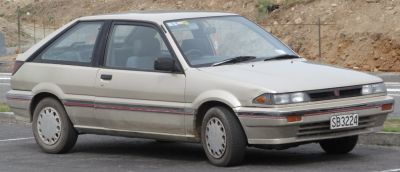
| Production: | 1986-1990 |
|---|---|
| Model Year: | 1986 |
| Length: | 4035 mm158.9 in |
| Width: | 1655 mm65.2 in |
| Height: | 1380 mm54.3 in |
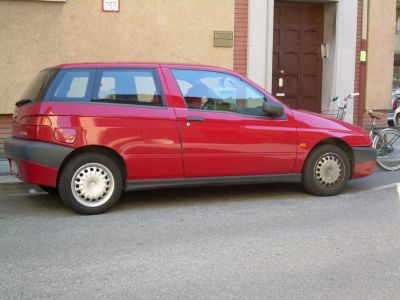
| Production: | 1997-1999 |
|---|---|
| Model Year: | 1997 |
| Length: | 4093 mm161.1 in |
| Width: | 1712 mm67.4 in |
| Height: | 1431 mm56.3 in |
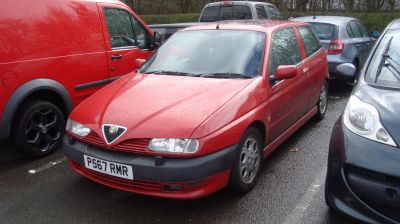
| Production: | 1994-1996 |
|---|---|
| Model Year: | 1994 |
| Length: | 4093 mm161.1 in |
| Width: | 1712 mm67.4 in |
| Height: | 1427 mm56.2 in |
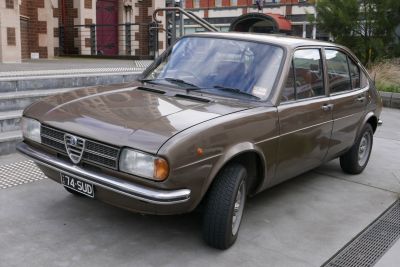
| Production: | 1972-1984 |
|---|---|
| Model Year: | 1972 |
| Length: | 3890-3995 mm153.1-157.3 in |
| Width: | 1590 mm62.6 in |
| Height: | 1370 mm53.9 in |
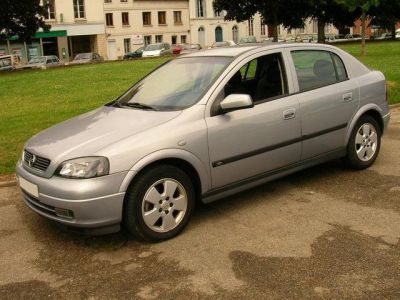
| Production: | 2002-2004 |
|---|---|
| Model Year: | 2002 |
| Length: | 4110 mm161.8 in |
| Width: | 1967 mm77.4 in |
| Height: | 1425 mm56.1 in |
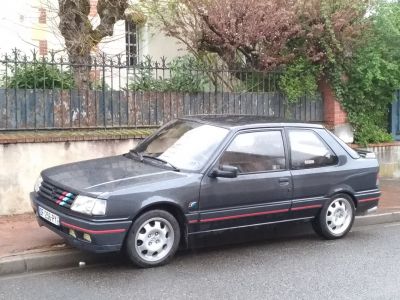
| Production: | 1989-1993 |
|---|---|
| Model Year: | 1989 |
| Length: | 4051 mm159.5 in |
| Width: | 1630 mm64.2 in |
| Height: | 1380 mm54.3 in |
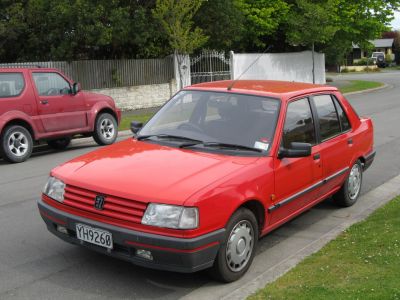
| Production: | 1989-1993 |
|---|---|
| Model Year: | 1989 |
| Length: | 4050 mm159.4 in |
| Width: | 1630 mm64.2 in |
| Height: | 1380 mm54.3 in |
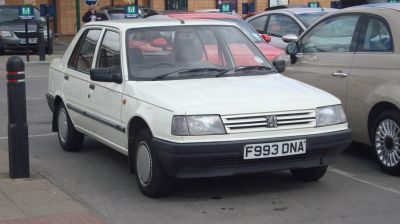
| Production: | 1985-1989 |
|---|---|
| Model Year: | 1985 |
| Length: | 4051 mm159.5 in |
| Width: | 1628 mm64.1 in |
| Height: | 1380 mm54.3 in |
